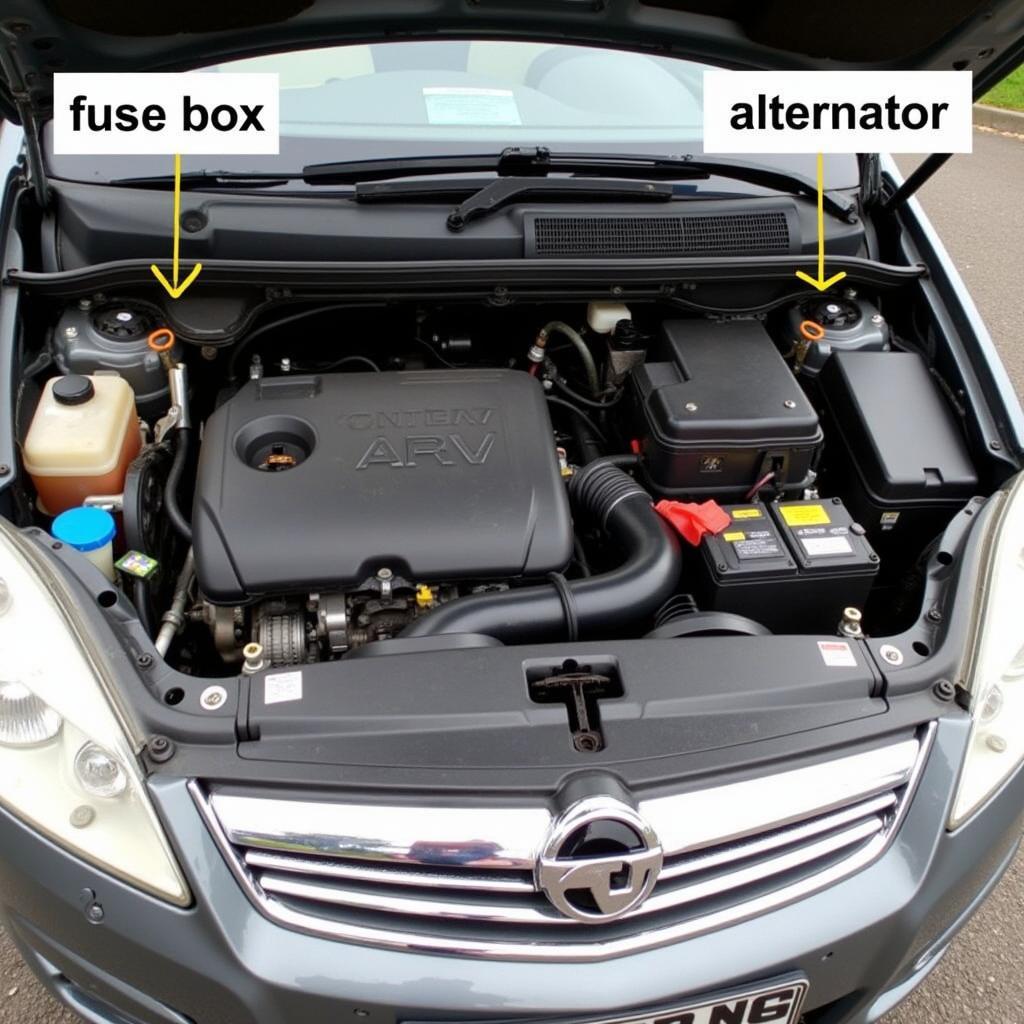The brake warning lamp illuminating on your 1999 Mercury Sable’s dashboard is a clear signal that something requires attention within your braking system. While it can be alarming to see this light, understanding its potential causes can help you address the issue effectively. This comprehensive guide delves into the common reasons behind a brake warning lamp illuminating on a 1999 Mercury Sable and provides a step-by-step approach to diagnose and potentially resolve the problem.
Understanding Your Brake Warning Lamp
The brake warning lamp is designed to alert you to a few key possibilities:
- Low brake fluid level: This is the most common reason for the warning lamp to illuminate.
- Engaged parking brake: If you forget to disengage the parking brake, the lamp will stay on.
- Brake system malfunction: A problem with a component like the master cylinder, brake lines, or ABS system can trigger the warning light.
Diagnosing the Issue: A Step-by-Step Guide
Before you begin, ensure your vehicle is parked on a level surface and the engine is off.
-
Check the parking brake: Ensure the parking brake is fully released. Sometimes, a simple oversight can be the culprit.
-
Inspect the brake fluid level: Locate the brake fluid reservoir under the hood (refer to your owner’s manual for the exact location). The reservoir will have a “MIN” and “MAX” marking. If the fluid level is below the “MIN” mark, add the appropriate brake fluid (DOT 3 or DOT 4, as specified in your owner’s manual) until it reaches the “MAX” line.
- Important: If you find the brake fluid level is low, it’s essential to determine where the fluid loss occurred. Inspect for any signs of leaks around the master cylinder, brake lines, and near the wheels.
-
Check for visible leaks: Carefully examine the area around the brake master cylinder, brake lines, and near each wheel for any signs of fluid leaks. Brake fluid is typically clear to light brown and has a slightly oily texture.
-
Inspect brake pads and rotors: While not directly related to the brake warning lamp, worn brake pads can contribute to braking issues. If you’re comfortable doing so, you can remove a wheel and visually inspect the thickness of the brake pads. If they appear excessively worn, consult a mechanic for replacement.
When to Seek Professional Help
If you’ve gone through the basic checks and the brake warning lamp remains illuminated, it’s crucial to seek professional assistance. Issues like a malfunctioning ABS system, a failing master cylinder, or internal leaks within the braking system require specialized tools and expertise to diagnose and repair.
“Ignoring a brake warning light can have serious safety implications. It’s always best to err on the side of caution and have your braking system inspected by a qualified mechanic if you’re unsure about the cause of the problem,” advises John Miller, a seasoned automotive technician with over 20 years of experience.
Preventing Future Brake Warning Lamp Issues
- Regular Brake Fluid Checks: Make it a habit to check your brake fluid level at least once a month and top it off as needed.
- Timely Brake Fluid Flushes: Brake fluid absorbs moisture over time, which can reduce its effectiveness. Consult your owner’s manual for recommended brake fluid flush intervals.
- Address Leaks Promptly: If you notice any signs of brake fluid leaks, address them immediately to prevent further damage and potential safety hazards.
Frequently Asked Questions
Q1: Can I drive my car with the brake warning lamp on?
A: It’s highly discouraged to drive with the brake warning lamp illuminated. It indicates a potential issue with your braking system, which could compromise your safety.
Q2: How much does it cost to fix a brake warning light issue?
A: The cost varies widely depending on the underlying cause. A simple brake fluid top-up might be inexpensive, while a brake system repair could be significantly more.
Q3: How often should I get my brakes inspected?
A: It’s generally recommended to have your brakes inspected at least once a year or every 12,000 miles, whichever comes first.
Conclusion
Addressing a brake warning lamp on your 1999 Mercury Sable promptly is crucial for ensuring your safety and the well-being of your vehicle. While some causes, like low brake fluid, can be addressed with simple checks, others require professional expertise. By following the steps outlined in this guide and seeking professional help when needed, you can keep your Mercury Sable’s braking system in optimal condition.


